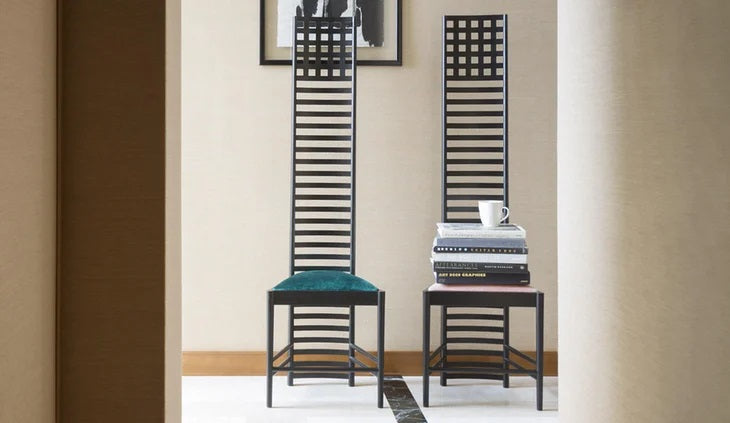Cassina was founded in 1927 by brothers Cesare and Umberto Cassina. In 1950's Italy, the company inaugurated industrial design. Thanks to the collaboration with Gio Ponti, one of the most important and renowned Italian designers and architects, Cassina contributes to the rebirth of post-war design. The Company immediately assumes an attitude to research and innovation, thanks to the involvement of important architects and designers, who contribute to create new forms, a characteristic that still distinguishes the brand today. The Sixties are marked by the success of the Brand and there are many names of internationally renowned designers, architects and artists who collaborate with Cassina. The great productions of designer furniture, objects with a great charm, designed for interior design, also began. Cassina's identity meets in an original and surprising combination, in which the technological attitude is closely linked to a craftsmanship of great tradition. The collections include the iconic furnishings of the great architects of the modern world such as Le Corbusier, Mackintosh, Frank Lloyd Wright, Rietveld, Charlotte Perriand, Franco Albini, Marco Zanuso, as well as important architects and designers such as Bellini, Lissoni, Magistretti, Gaetano Pesce and Philippe Starck. Since 2015 Patricia Urquiola has been the art director of Cassina.

Cassina creates the style models designed by 20th century architects in a continuous dialogue between past, present and future, to offer furnishing elements that are both functional and original. With the I Maestri collection, it perfectly respects original designs and functional concepts, updated according to technological evolution. In fact, Cassina has produced the reference works of contemporary design from the 1950s to the present day, signed by some of the most important international designers. The Brand continues to look to the future with audacity, passion, curiosity and an open approach, in which products with the most innovative soul and modern icons create together authentic, welcoming, personal atmospheres, dialogue according to a code of design excellence, formal sensitivity, solidity and cultural authority.
I Maestri collection
The Hill House

Chair by , another exponent of the Masters of Cassina , is also geometric and linear . Hill House is a hymn to Japanese graphics, with its high back with vertical lines, ending in a trellis. The contrast created between the black ash of the structure and the velvet of the seat, in green or pink, is intense. The Hill House takes its name from the famous residence in Helensburgh curated by Mackintosh, who designed the exterior, interior and furnishings.
Zig-zag

Chair by Gerrit Thomas Rietveld is the exaltation of the oblique line: a chair, in cherry or in natural or stained ash, made up of four floors in sequence (back, seat, support, base). Elegant and stable, it testifies to the artist's way of working: as an artisan cabinetmaker and as a rationalist architect.
Lady Armchair

is without a doubt one of the founding fathers of Italian industrial design. Zanuso was an all-round designer, taking an interest not only in the aesthetics of the product but also in its industrialization, distribution and communication. The iconic Lady armchair , gold medal at the 9th Milan Triennale (1951), can be considered the beginning of the birth of upholstered furniture with a modern conception. In fact, Zanuso was inspired by the industrial design of automobiles: the individual pieces are represented and made individually to understand the relationships between the parts and then assembled. In this way, the individual parts have different degrees of padding according to the different support that the human body needs. Even the padding is of a modern conception, with foam rubber and springing with cord tape.


